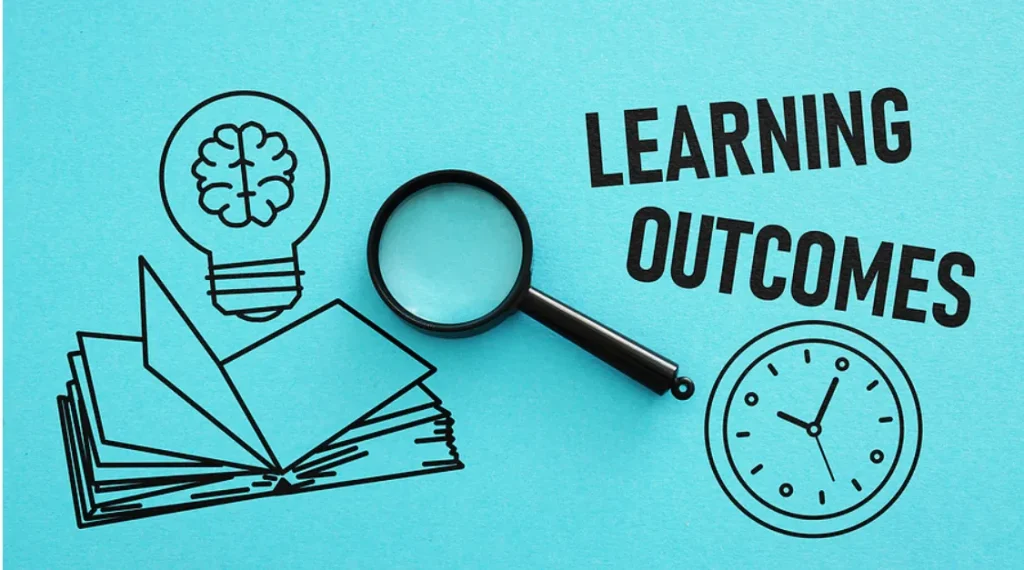There’s a moment in teaching when you ask yourself: Are they actually learning what I think I’m teaching? I’ve had lessons that felt amazing—great energy, great participation—but when I looked at the student work, the outcomes told a different story.
That’s where measuring learning outcomes becomes so important. It’s not about collecting grades—it’s about figuring out whether the instruction actually worked, and what to adjust if it didn’t.
Let’s talk about how to define strong learning outcomes, how to measure them effectively, and how to use the results to continuously improve teaching and learning—without making it all about the numbers.
📘 What Are Learning Outcomes?

Learning outcomes are clear, measurable statements that describe what students should know, understand, or be able to do after a lesson, unit, or course.
Examples:
-
Students will analyze themes in a literary text.
-
Students will solve linear equations with one variable.
-
Students will explain the causes and effects of a historical event.
Outcomes go beyond content—they focus on what students can demonstrate as a result of instruction.
🎯 Why Learning Outcomes Matter
Strong learning outcomes help:
-
Clarify instructional goals
-
Align teaching with assessment
-
Guide curriculum planning
-
Provide a roadmap for students
-
Inform data-driven decisions
And most importantly—they help educators focus on what students are actually learning, not just what’s being covered.
🧱 How to Write Clear and Measurable Learning Outcomes
Start with a verb and focus on student action. Use Bloom’s Taxonomy to guide your wording based on the level of thinking you want.
Good outcome:
-
“Students will compare and contrast plant and animal cells.”
Less effective outcome:
-
“Students will understand the parts of a cell.”
✅ Pro tip: If you can’t measure it, it’s not clear enough.
🧪 How to Measure Learning Outcomes (Without Making It All About Tests)
Measuring outcomes doesn’t mean giving more tests—it means gathering evidence of student learning in multiple ways.
🔍 Formative Assessments (During Learning)
-
Exit tickets
-
Quizzes
-
Think-pair-share
-
Journals or reflection logs
-
Quick student surveys
These help you catch misconceptions early and adjust instruction as needed.
📊 Summative Assessments (After Learning)
-
Projects
-
Essays
-
Presentations
-
Performance tasks
-
Unit tests or final exams
Summative assessments should align directly with the learning outcomes—no surprises, no trick questions.
🧑🎓 Other Evidence
-
Observations
-
Student discussions
-
Portfolios
-
Peer assessments
The more variety, the more accurate your picture of student learning.
📈 Using Learning Outcomes for Continuous Improvement
This is where the magic happens. Measuring outcomes is only step one—what you do with that information is what makes the difference.
1. 🔁 Reflect on What Worked and What Didn’t
After an assessment, ask:
-
Which outcomes were met?
-
Where did students struggle?
-
Did certain teaching strategies work better than others?
-
What can I reteach or reinforce?
This is the heart of responsive teaching.
2. 📊 Look at Trends Over Time
Don’t just look at one assignment. Use data from multiple checkpoints to spot:
-
Skill gaps
-
Instructional blind spots
-
Student growth
-
Equity issues (Who is meeting the outcomes? Who isn’t?)
It’s not about assigning blame—it’s about identifying where support is needed.
3. 🧑🏫 Collaborate with Colleagues
Learning outcomes become even more powerful when used as part of professional learning communities (PLCs).
Discuss:
-
How are we all assessing this outcome?
-
What instructional moves worked best?
-
How can we ensure consistency and equity?
Shared outcomes lead to shared strategies and stronger results.
4. 🧠 Involve Students in the Process
When students know the learning goals—and how to measure them—they become more invested.
Try:
-
Posting outcomes clearly in your classroom
-
Using student-friendly rubrics
-
Giving students a chance to self-assess
-
Celebrating progress, not just perfection
Learning outcomes should be transparent and empowering, not just something written in the teacher’s planner.
📋 Sample Learning Outcome Tracker
Here’s a simple format I use to track learning outcomes in my own practice:
| Outcome | Assessment Used | % Mastery | Reflection | Next Steps |
|---|---|---|---|---|
| Compare and contrast ecosystems | Group presentation + rubric | 78% | Students struggled with vocabulary | Mini-lesson + vocabulary game next week |
A tracker like this keeps your data actionable—not just something to check off.
✅ Final Thoughts: Making Learning Count
Learning outcomes aren’t just a checklist—they’re a tool for clarity, focus, and growth. When we measure them thoughtfully and use the results to reflect and adapt, we create classrooms that are:
-
Responsive
-
Equitable
-
Effective
-
Student-centered
So next time you’re planning a lesson, don’t just ask “What am I teaching?” Ask:
👉 “What will my students walk away knowing, doing, or being able to show?”
That’s the true measure of learning.
Love great food and entertaining guests? Visit Decology for delicious recipes, hosting tips, and lifestyle inspiration! – https://decology.com



